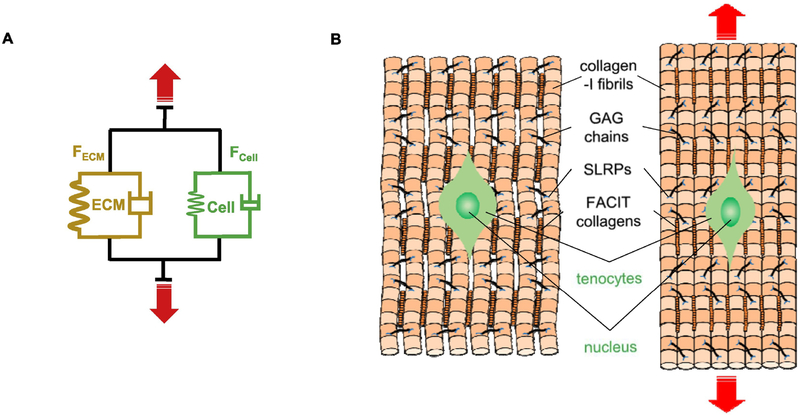Fig. 2:
Mechanical response of ECM and cells of tendon-type tissues. (A) Spring-dashpot representation of forces shared by ECM (FECM) and Cells (FCell) which depend on the type of tissue (tendon, muscle, heart, etc.). ECM components include structural proteins such as collagen (various types) and also adhesion proteins (such as Fibronectin, Vitronectin, Osteonectin) that couple cells to ECM through adhesion receptors. (B) Mechanical strain on tendon tissue is primarily sustained by collagen fibrils present in collagen fibers which results in straightening of their crimps, but strain is also transferred to tenocytes via adhesion receptors.

